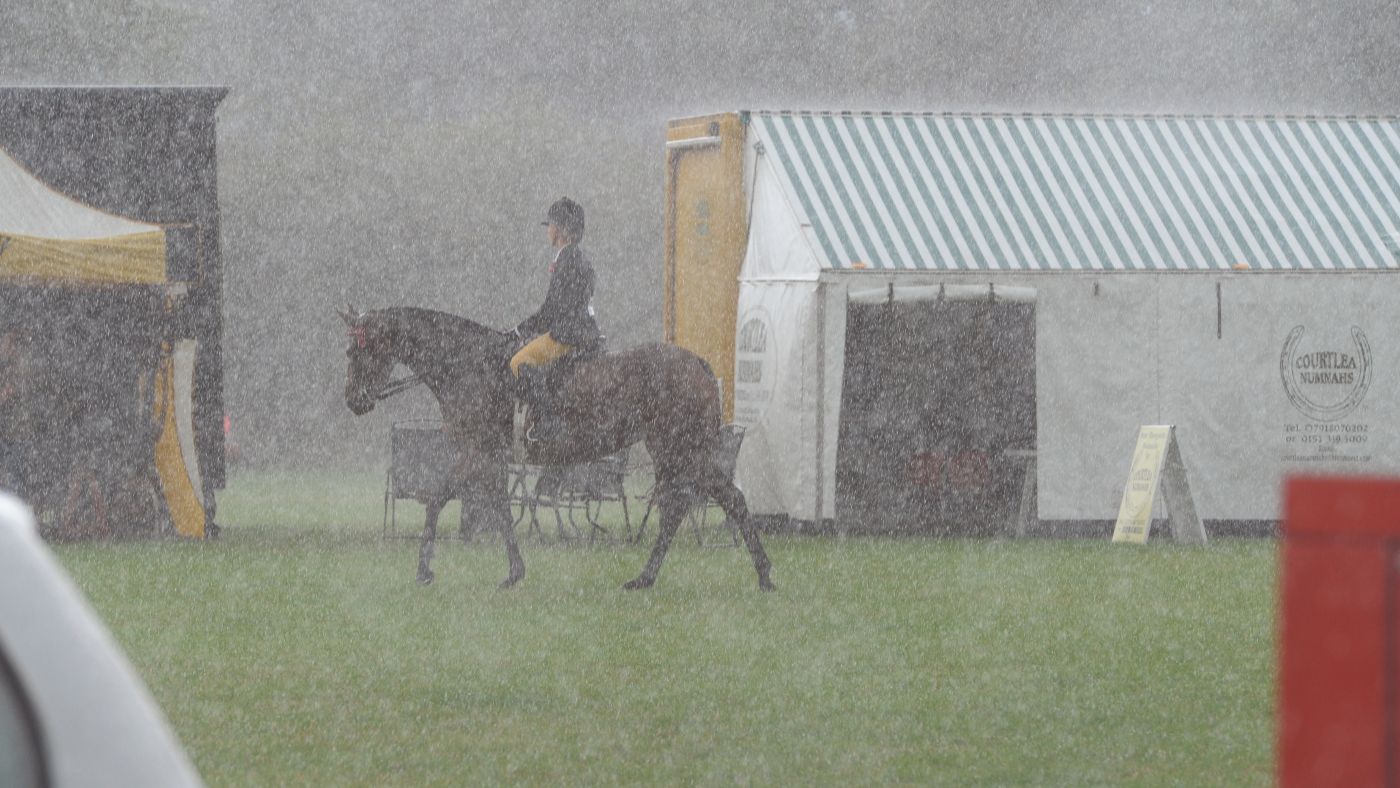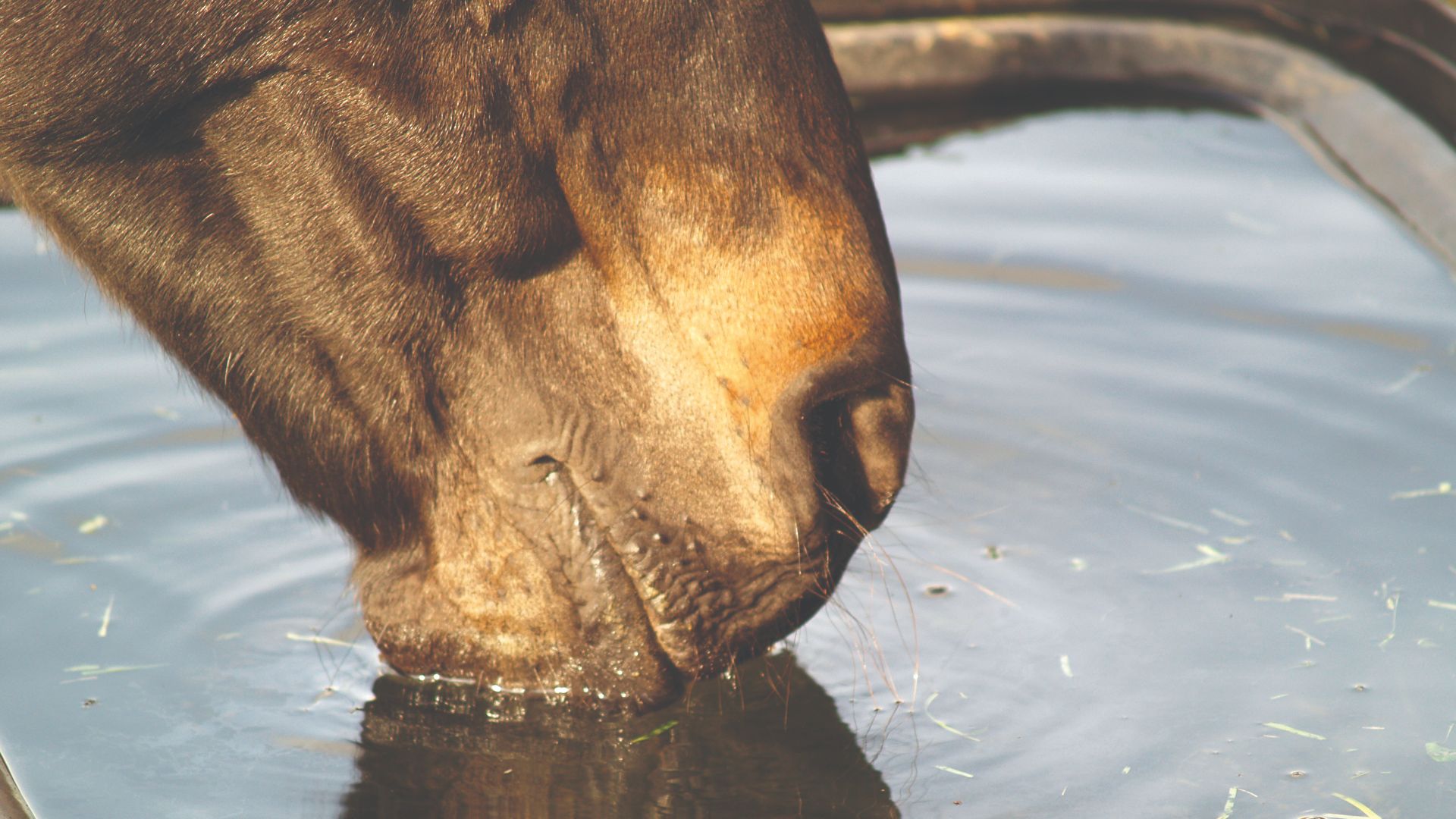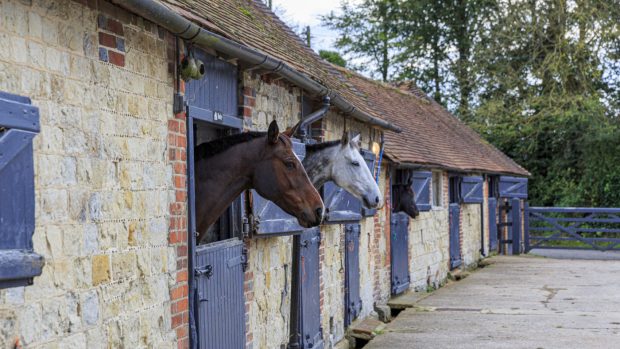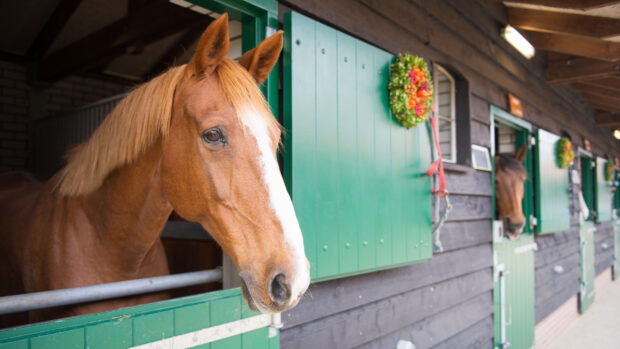Horse & Hound created this content as part of a paid partnership with Monarch Equestrian. The contents of this article are entirely independent and solely reflect the editorial opinion of Horse & Hound.
Sustainability for horse owners is coming increasingly to the fore. It influences what we buy, how we dispose of waste products and even how we manage grazing land. But, what if we could use one of our planet’s most precious resources – water – more sustainably, too? Enter rainwater harvesting for equestrians.
Sloping roofs are a key component in many rainwater harvesting systems and, what with stables, barns and field shelters at our disposal, roofing’s something equestrians tend to have in abundance. But how do you implement rainwater harvesting? Why is it so important? And, will it save you money?
Rainwater harvesting for equestrians: why do it?
The UK is usually the butt of rainfall jokes; just this month Storm Floris brought high winds and rainfall to the UK in the middle of summer. But, worryingly, there are fairly imminent threats to the UK’s water security that will see the nation’s supply come under stress. These are not just population growth, but also, predictably, climate change.
“I think a lot of people don’t realise that water stress is going to be a massive issue in this country,” explains Ruth Dancer, CEO of White Griffin, a sustainability consultancy. She adds that at least seven regions of the UK are predicted to face water stress by 2030, with localities in the south of England expected to be worst affected.
“We’ve had a hosepipe ban over here in Gloucestershire this summer,” she continues. “It’s frustrating because it’s hard to water your plants and clean your car, but that doesn’t represent a water shortage.
“Combatting severe water stress means limiting the times a day when you can use water, as well as the volume. This is serious for a sector like equestrian, because using water is a welfare issue, not just in terms of hydrating and cooling our horses, but watering our arena surfaces to reduce respiratory risks, too.”
Ruth adds that water will evolve as a commodity, costing more to use. “Water will likely become a lot more like electricity; most people are concerned about their electric usage because their bills are very high, and as water becomes more expensive, then attitudes towards use will shift.”

Wetter, warmer winters are going be the new normal in the UK. Credit: Trevor Meeks
“We need to learn to work with our climate”
Ruth urges the equestrians to understand that water stress isn’t a ‘maybe’: it’s going to be a reality.
“Hotter, drier summers and warmer, wetter winters are the pattern for the UK moving forward,” she explains. “We need to learn to work with that.”
Ways to invest in responsible water use include installing automatic water drinkers, which deliver water on demand with no waste, although they do make it more difficult to monitor an individual horse’s water intake. The pipes also need to be well lagged to avoid freezing in the winter.
“Our self-fill drinkers are direct supply, which means flexible installation options,” adds Michael Thompson, operations manager at Monarch Stables. “It also reduces the amount of water waste due to spillage or contamination, helping lower bills alongside rainwater harvesting.”
Equestrian buying habits represent a long-term climate mindset, too. Supporting sustainable business helps lower your carbon footprint. This, in turn, reduces your contribution to climate change.
“For example, our multi-wall polycarbonate sheets can be recycled and processed into other polycarbonate products,” adds Michael. “As such, they are not single-use plastic.”
“Every metre saves over 230kg of CO2 going into the atmosphere, and the equivalent of 35,000 bottle tops going to landfill.”
For Ruth, the ideal culture shift is a move towards water self-sufficiency, which means embracing rainwater harvesting for equestrians.
“This is something that’s reasonably normal for farmers. There are companies out there that supply rainwater harvesting on a very large scale for agriculture and business,” adds Ruth, but she explains there are examples of smaller-scale harvesting on livery yards of all sizes, and even on private yards.
“We’ve got these lovely stable roofs perfect for collecting rainwater. Even if you’ve only got one or two stable roofs and one smallish container, it’s free water. And, there’s technology and maintenance you can invest in to make sure you can store it and it’s clean.”
Rainwater harvesting for equestrians in a nutshell
In simple terms, rainwater harvesting gives property owners access to supplementary water alongside – and, crucially, separate from – their mains water supply.
“This water does not meet regulatory standards for mains water, nor is it ‘potable’, or safe for human consumption,” explains a spokesman from the UK Water Reuse Association (UKWRA), a trade organisation championing water reuse as a defence against future flood and water shortage risks. “This is why it must be stored separately from mains water to avoid cross-contamination.”
Using drainage pipework, rainwater is collected from sloping roofs of any kind. This includes properties, municipal and commercial buildings, even barns and stables.
Rainwater is fed through a filter and into an above-ground or underground storage tank. Individual harvesting systems have bespoke filtration and pumping systems, from domestic use of toilet flushing to outside use only for watering plants and washing cars.
How does rainwater harvesting for equestrians work?
According to UKWRA, a basic setup for stable yard cleaning, horse wash-down bays and rinsing tack and equipment could include:
- a guttering system on stable roofs
- leaf guards and first-flush diverters to improve water quality
- a small above-ground tank up to 5,000 litres, suitable for capturing run-off
- a basic filter, possibly a low-pressure pump or gravity-fed hose
“The indicative cost here is from £2,000 to £10,000+, depending on size, access, and installation needs,” says the spokesman. “These systems are relatively low-tech, easy to maintain, and reduce the reliance on mains or borehole water for outdoor use.”
The spokesman explains that rainwater harvesting can be scaled up, and can even meet the demands of major events and venues.
“The London 2012 Olympics equestrian village used reclaimed water to irrigate the stadium surface,” he continues.
As well as riding arena irrigation, higher-end systems can be designed to supply water for toilet flushing, laundry facilities and even animal consumption, subject to appropriate filtration and treatment. A large or commercial yard would need a much larger underground tank with a 20-100,000l capacity or more, as well as automated control systems, pressure pumps and integrated backup from mains supply. This, of course, means a sizable investment.
“The investment could be anything from £10,000-£30,000 or more, depending on usage requirements and tank size,” confirms the spokesman.
Caring for a rainwater harvesting system
DIY maintenance is possible for smaller systems, but the UKWRA recommends a service contract or annual check by a qualified technician, especially for larger or more complex systems.
While there is no mandatory inspection regime for rainwater harvesting systems, UKRWA recommends that all commercial users adhere to the BS EN 16941-1:2024 standard, which is a rainwater harvesting code of practice. Additionally, they advise planned routine maintenance and checks, especially where systems supply water to humans or animals.
Above or below-ground tank?
Above-ground tanks might be more convenient for cleaning and inspection, but they come with drawbacks. “Above-ground tanks are prone to algae growth,” advises the UKWRA spokesman. “They require protection from UV exposure to reduce this; opaque tanks and protective covers help.”
Other precautions include visual inspections every few months for algae, sediment and structural integrity. Annual cleans, or cleans as necessary, are essential.
“Below-ground tanks are less exposed to light and temperature changes, so there is lower biological activity,” continues the spokesman. “Arrange annual inspections for silt build-up or debris.”
Can horses drink harvested rainwater?
Harvested rainwater is not ‘potable’, or fit for human consumption, unless appropriately treated and filtered.
But can horses drink harvested rainwater?
“Livestock does not require potable water for consumption,” says the UKRWA spokesman. “Horses can drink harvested rainwater, but care needs to be taken to ensure it is free from contaminants and the system is maintained regularly.
“Multi-stage filtration and UV treatment could be implemented at yards where harvesting rainwater for equine consumption and soaking hay is considered. UKRWA recommends adherence to BS EN 16941-1:2024 alongside a routine of maintenance and checks, especially where water is intended for consumption.”
Rainwater harvesting for equestrians: what will I save?
Rainwater harvesting for equestrians encounters many variables. From the size of the yard to the capacity of the system, it could be several years before that system pays for itself. However, while future water stress is certain, future tariffs are not. Using mains water on the yard could become significantly more expensive, so using less water from the mains can help reduce bills.
Ultimately, hosepipe bans do not affect rainwater use, although under current rules they also don’t directly affect equine welfare as hosepipes can still be used for tasks associated with animal care. “It also wouldn’t be affected by any other restrictions on mains water usage that may feature regularly in the future,” adds the UKWRA spokesman.
According to the UKWRA, rainwater harvesting assists equestrians on top of reducing bills by:
- Reducing rainwater runoff, helping protect grazing during wetter winters and flooding
- Supporting biodiversity net gain and water neutrality goals, which may assist with rural grants or planning approval
- Securing a water supply in times of drought and making yards more resilient to climate change
Ruth adds that you can be as sophisticated as your budget allows and you don’t have to spend thousands.
“If you’re canny and have a few bits of drainpipe and a water butt, you can rig up your own small-scale rainwater collecting system,” she says. “It’s perfect for watering plants, rinsing equipment and washing horses down.”
For more information and advice on rainwater harvesting, visit the UKWRA’s website here.
- To stay up to date with all the breaking news from major shows throughout 2025, subscribe to the Horse & Hound website
You might also like:

Hosepipe ban in the UK: what does this mean for horse owners?

Six simple ways that horse owners and riders can embrace sustainability in 2025

Going green – the steps you can take to manage your grazing land more sustainably

How will the drought affect horse owners?
With prolonged dry weather and a hosepipe ban that started in parts of the country yesterday (Thursday, 5 April), the

Subscribe to Horse & Hound magazine today – and enjoy unlimited website access all year round





